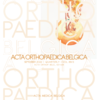Distal fixation modular stem hemiarthroplasty versus proximal femoral nailing for unstable intertrochanteric fractures: a retrospective cohort study
Hemiarthroplasty; proximal femoral nail; unstable intertrochanteric fracture; modular stem; distal fixation stem.
Published online: Jan 22 2023
Abstract
The treatment of unstable intertrochanteric fractures (UITF) is a controversial issue in the current literature. The aim of this study was to compare the curative effects of distal fixation modular stem (DFMS) hemiarthroplasty with proximal femoral nailing (PFN) on UITFs in the elderly. From February 2017 to November 2019, 98 elderly (≥65 years) patients with UITF were included in this single-center retrospective cohort study. Mean follow-up duration was 24.1±11.9 months. Patients were divided into the DFMS group (52 patients) and the PFN group (46 patients). In the DFMS group, trochanteric fixation was performed using a trochanteric cable plate system. Primary outcome measures included Harris hip score (HHS), mobility score, implant related complications and mortality. Secondary outcome measures included hospitalization duration, surgical time and transfusion rate. Mean age of the patients was 78.7±7.2 years (65-96 years). DFMS group had longer surgical time, higher transfusion rates and longer hospital stays (p<0.05). Mean HHS was 80.7±10.5 and 81.9±12.2 in the DFMS group and PFN group, respectively. There was no statistically significant difference between the two groups in terms of HHS, mobility score and mortality. Implant failure rates were significantly higher in the PFN group (p=0.015). Implant failure, one year mortality and overall mortality rates were 0%, 15.4% and 17.3% in DFMS group and 10.9%, 15.2% and 19.5% in PFN group, respectively. Both surgical methods can be effectively used in the treatment of UITFs with similar satisfactory functional results and similar mortality rates. In addition, the DFMS group exhibited significantly lower implant failure rates and PFN group provided significantly lower surgical time duration, transfusion rate and hospital stay duration.
